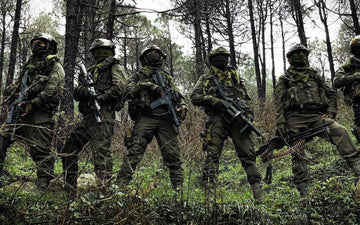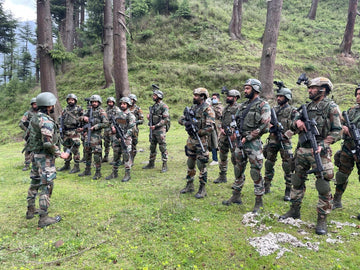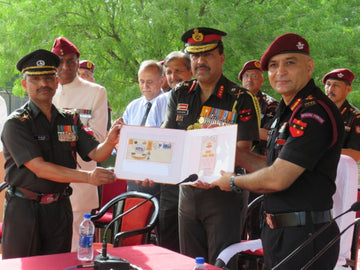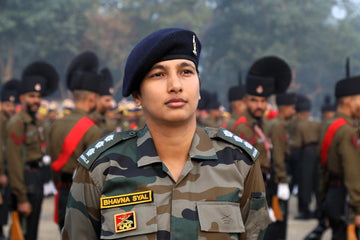Joining the Rashtriya Rifles, an elite counter-insurgency force of the Indian Army, is a rigorous process that demands dedication, endurance, and valor. As one of the most prestigious regiments, the Rashtriya Rifles falls under the category of the Infantry Corps of the Indian Army and plays a crucial role in tackling insurgency and terrorism in various terrains across the nation. For aspiring candidates, successfully navigating the steps to join these ranks is not only a personal achievement but also a significant contribution to national security. This guide aims to concisely outline the detailed process of becoming a part of this revered unit.
Historical Context
Established in 1948 post-independence, the Rashtriya Rifles has undergone significant evolution. Initially formed to provide a dedicated and multi-regional counter-insurgency force, this regiment has been pivotal in operations across Jammu & Kashmir and the North-Eastern states of India. Today, it stands as a symbol of resilience and commitment, demonstrating extraordinary valor in challenging circumstances.
The regiment comprises a blend of young recruits and experienced soldiers, reflecting both fresh perspectives and honed skills. On the operational front, the Rashtriya Rifles has maintained a reputation for strategic operations that instill peace in conflict zones. Their motto, "Unity and Discipline," encapsulates the spirit of teamwork and dedication that defines this elite corps.
Joining the Indian Army: The First Step
The pathway to joining the Rashtriya Rifles begins with enlisting in the Indian Army. Candidates can join as either officers or soldiers (Jawan). This section explores these two routes in detail.
As an Officer
To become an officer in the Indian Army, candidates need to clear a series of rigorous examinations and training programs:
-
Examinations: Potential officers must appear for the Union Public Service Commission (UPSC) examinations. They can opt for:
- National Defence Academy (NDA): Open to male candidates between 16.5 to 19.5 years, the NDA is a premier training institution that prepares young men for leadership roles in the armed forces.
- Combined Defence Services (CDS): Targeted at graduates, providing an entry into the Indian Army, Navy, and Air Force, the CDS can be an option after completing a degree.
- Direct Entry Schemes: The Indian Army offers various direct entry schemes, including the Technical Entry Scheme (TES) for engineering graduates and the University Entry Scheme (UES) for final-year students of recognized universities.
-
Training: Once candidates clear the examinations:
- They undergo three years of comprehensive training at the NDA, where they learn fundamental military skills, academics, and physical fitness.
- Following their training at NDA, they spend an additional year at the Indian Military Academy (IMA) or the Officers Training Academy (OTA). Here, they refine their leadership capabilities and tactical training, leading to their commissioning as officers.
As a Jawan (Soldier)
Joining as a soldier is a slightly different path, full of opportunities for those dedicated to serving the nation:
-
Recruitment Rallies: Candidates can participate in recruitment rallies organized by the Indian Army. The recruitment process includes:
- Physical Fitness Tests: These tests evaluate candidates on criteria such as running, push-ups, and chin-ups.
- Medical Examinations: Candidates must pass a thorough medical evaluation ensuring they meet the requisite health standards.
- Written Examination: A written test assesses candidates' general knowledge, mathematics, and reasoning abilities.
The recruitment process may vary based on the specific entry scheme and regiment, but the core remains the same: physical fitness, mental acuity, and a steadfast commitment to serve.
Assignment to a Regiment
Once candidates have completed their initial training and are officially commissioned as officers or enlisted as soldiers, they are assigned to various regiments within the Indian Army. This assignment is influenced by the army’s needs and the individual's performance during their training phase.
Pre-Induction Training for Rashtriya Rifles
There is no direct recruitment process for the Rashtriya Rifles. Instead, selection occurs post-assignment to a regiment. Here’s a deeper look at this process:
- Selection: Soldiers and officers can be selected for the Rashtriya Rifles based on performance evaluations and during service. Commanding officers may recommend candidates who exhibit exceptional skills, consistency in performance, and leadership potential.
- Specialized Training: Once selected, candidates undergo rigorous additional training focused specifically on counter-insurgency and unconventional warfare. This training is designed to empower soldiers with the specific tactics required to operate effectively in diverse terrains and complex situations.
Key Requirements and Training
Physical and Mental Fitness
To ensure that candidates are fit for the demanding role in the Rashtriya Rifles, they must meet stringent physical and mental standards. These include:
- Stamina and Strength: Regular physical training sessions are designed to enhance endurance, strength, and fitness levels. Candidates participate in various drills to prepare them for potential combat scenarios.
- Mental Resilience: The psychological aspect is just as crucial. Continuous psychological evaluations help prepare soldiers for high-pressure situations, ensuring that they can operate effectively in conflict zones.
Continuous Training
Training for personnel in the Rashtriya Rifles is an ongoing process. After initial selection and specialized training, soldiers routinely engage in:
- Skill Enhancement: Regular drills focus on the latest tactics in counter-insurgency, which are continually evolving based on global conflict trends.
- Joint Training Exercises: Interoperability with other security agencies and armed forces enhances the overall combat capability of the Rashtriya Rifles.
Commitment and Perseverance
Joining the Rashtriya Rifles is not merely a career choice; it is a lifelong commitment to serving and protecting the nation.
Rigorous Nature of Training
Candidates must prepare themselves mentally and physically for strenuous training regimens and the possibility of deployment in high-risk areas. The commitment does not end upon joining, as personnel are expected to consistently perform at their best, often under trying conditions.
Case Studies or Real-World Applications
To understand the impact of the Rashtriya Rifles, we can look at several instances where their presence has been crucial:
Jammu & Kashmir Operations
The Rashtriya Rifles has played a pivotal role in counter-insurgency operations in Jammu & Kashmir. For instance, during Operation Sarp Vinash in 2008, these troops successfully neutralized multiple terrorist positions in the region. Their ability to operate effectively in mountainous terrains is a testament to their specialized training and commitment.
North-Eastern India
In the North-Eastern states, the Rashtriya Rifles is not only engaged in military operations but also plays a significant role in winning the hearts and minds of the local population. Programs aimed at community development illustrate how the regiment assists in stabilizing the socio-political landscape through positive engagement.
Statistical Data and Research Insights
Understanding the scale of operations and the significance of the Rashtriya Rifles can be reinforced by looking at some key statistics:
- Deployment: The Rashtriya Rifles has approximately 63 battalions, with over 35 deployed in conflict zones, including Jammu & Kashmir.
- Resilience: The force has successfully conducted numerous operations that have resulted in the neutralization of hundreds of insurgents while minimizing civilian casualties.
These figures highlight not only the regiment's efficacy but also its commitment to protecting the integrity of the nation while preserving lives.
Challenges and Solutions
While joining the Rashtriya Rifles comes with its rewards, candidates face several challenges during this demanding journey:
Physical Challenges
Solution: Candidates should focus on a well-rounded fitness regime, working on stamina, strength, and flexibility. Joining local sports clubs or participating in fitness boot camps can help candidates prepare adequately.
Psychological Challenges
Solution: Mental resilience can be fortified through mindfulness training, meditation, and techniques that help manage stress. Engaging in team-building activities can also simulate the environment soldiers will face and prepare them psychologically.
Recruitment Challenges
Solution: Staying abreast of recruitment notifications and understanding the selection criteria can streamline the joining process. Aspiring candidates should connect with current and previous recruits to gather insights and tips.
Future Trends and Predictions
As geostrategic landscapes evolve, so does the nature of military operations. Here are some insights into future trends that may shape the recruitment and operational strategies of the Rashtriya Rifles:
- Technology Integration: Advancements in technology will require troops to become adept with digital warfare and modern weaponry. Training will increasingly include technology use in combat scenarios.
- Focus on Asymmetric Warfare: Given the rise of non-state actors and hybrid warfare, the Rashtriya Rifles may pivot towards enhanced training in Urban Warfare and Cyber Warfare techniques.
Conclusion
Embarking on a journey to join the Rashtriya Rifles is a commitment that encapsulates the spirit of bravery, discipline, and service to the nation. The steps outlined – from joining the Indian Army to specialized training – are structured to ensure that only the most dedicated and capable individuals are selected for this exemplary force.
Aspiring candidates should prepare thoroughly, seeking training, maintaining physical fitness, and understanding the broader implications of serving within such an elite unit. The path may be challenging, yet it offers a fulfilling opportunity to serve the nation while engaging in operations that significantly contribute to national security.
For those ready to embrace the call to serve and protect, the Rashtriya Rifles stands as a beacon of commitment, courage, and camaraderie where each soldier’s contribution adds to the tapestry of India's armed forces.





